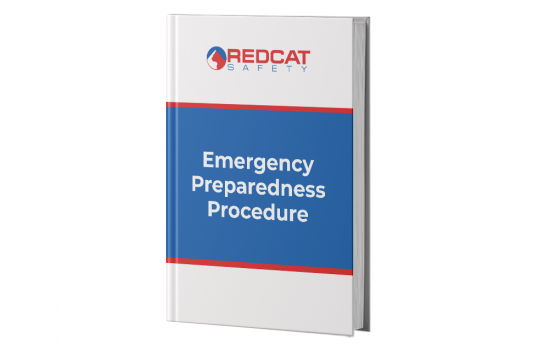What are Emergency Preparedness Procedures?
Emergency preparedness procedures are the plans and actions that are taken in advance to deal with an identified emergency. They are designed to protect people and property and minimize the effects of an emergency on the environment. Many different types of emergencies can occur, ranging from natural disasters to minor accidents and bomb threats. As such, emergency preparedness procedures must be tailored to the specific type of emergency that is likely to occur.
Why are Emergency Preparedness Procedures Important?
Emergency preparedness procedures are very important because they can help save lives and minimize damage in the event of an emergency. By having a emergency response plan or procedure to follow and knowing what to do in an emergency, people can be better prepared to respond quickly and effectively. It is also important for a business to have clear and concise emergency procedures in place and to ensure that all employees are familiar with them. There are generally six main components to emergency preparedness procedures:
- Evacuation planning.
- Emergency exercises and drills.
- Emergency equipment and resources.
- Controlling an emergency.
- First aid and medical assistance.
- Business recovery.
Evacuations
Upon activation of an emergency or the sounding of an emergency alarm, all persons at a workplace should assemble in a designated assembly area and await further instructions from the emergency controller(s). From there a move to a safer area can be coordinated if deemed necessary. All persons at a workplace should receive instructions about how to safely evacuate. Evacuation instructions should include all information about:
- The location of the safety reference points for a workplace.
- The procedures for evacuating a workplace safely in the event of an emergency.
Note: All designated assembly areas should be sign-posted.
Emergency Exercises and Drills
Emergency exercises and drills are activities that are done to prepare for an emergency. They help people to be ready for anything that might happen and to know what to do in different situations. There are many different types of emergency exercises and drills, and it is important to choose the ones that are right for your situation. Some of the most common emergency exercises and drills include natural disasters, medical emergencies, earthquakes, storms and fire drills. It may also be important to have a plan for what to do if there is a power outage too.
Emergency exercises should be conducted to:
- Evaluate the effectiveness of emergency procedures.
- Validate the competency of key emergency response personnel.
- Assess our capability to respond to an emergency.
- Reinforce prior training.
- Identify opportunities for improvement.
Emergency exercises must be designed to systematically include everyone likely to be involved in an emergency and may be in the form of:
- Simulated emergencies.
- Practical drills.
- Desktop exercises.
- Resources and equipment checks.
- Other relevant exercises.
Emergency Equipment and Resources
In the event of an emergency, it is critical to have the right equipment and resources on hand to ensure everyone’s health and safety. At a minimum, all buildings and machinery should be fitted with appropriate fire-fighting equipment in the form of extinguishers, hose reels and/or fire blankets. Medical equipment and trained first aid personnel should also be available for any potential medical emergency.
Controlling an Emergency Situation
If you find yourself in an emergency, it is important to stay calm and think clearly. There are a few key steps you can take to help control the situation and stay safe. Effective communication is a key factor in managing any emergency. To ensure effective communication, all persons must try to remain calm and pass on facts (either verbally or by cell phone) that can be used to determine the level of response required for the emergency. It is also important that a trained and competent person take control of the situation and delegate the required tasks and actions needed.
First Aid and Medical Assistance
Every workplace must determine the number of first aid or medical attendants they require to ensure adequate coverage. This should be done considering the size of the workplace and the number of personnel and:
- Shift arrangements in place.
- Leave and other absence coverage.
- Local legislative requirements.
First aid or medical training must be provided by an appropriately authorized training provider and the courses must be certified.
Business Recovery
Business recovery is the process by which an affected organization regains normal operations following an emergency. Aspects that may need to be considered and prioritized include:
- The extent of external resources required.
- The assets and projects that are affected.
- The financial impacts and expected recovery expenses.
- If there are any ongoing business threats.
- If there are any further interruptions to the business expected.
- The associated constraints on other assets or projects.
- The resumption of operations.
- The impacts on clients.
- The impacts on suppliers.
- The repair of equipment and property.
During the recovery process, the focus should be on returning all systems to normal status or reconstituting these systems to a new condition that is less vulnerable.
Contents of this Emergency Preparedness Procedure
- Approval.
- Purpose.
- Scope.
- Terms and Definitions.
- Roles and Responsibilities.
- Procedures.
- Emergency Preparedness Overview.
- Emergency Preparedness Processes.
- Workplace Specific Inductions and Visitor Briefing.
- Controlling an Emergency.
- Notify the Emergency Situation.
- Emergency Exercises.
- Emergency Fire Alarms and Assembly Points.
- Emergency Planning with External Resources.
- General Fire Prevention.
- Hazardous Materials.
- Fire Fighting Equipment.
- Fire Fighting Equipment Plan.
- Provision of First Aid.
- First Aid Attendant Numbers and Training.
- Fire Wardens.
- Dangerous Goods and Hazardous Chemicals.
- Maintenance and Testing.
- Testing of Equipment.
- Fire Extinguisher Mounting.
- Emergency Eye Wash Facilities.
- Evacuation Building Procedure.
- Evacuation Route Diagram.
- Signage.
- Training.
- Related Procedures, Forms and Documents.
- Review Criteria.
- Record Management.
- References.
Why Choose to Buy this Emergency Preparedness Procedure
This 12-page emergency preparedness procedure template can provide you with the necessary guidelines for the provision and maintenance of emergency response capabilities, including (but, not limited to):
- Emergency facilities – first aid and firefighting.
- Emergency response personnel – competent first-aiders, fire wardens etc.
- Emergency resources.
The procedure prescribes the resources that may be needed and actions to follow to minimize the negative impacts on people, assets and the environment in the event of an emergency.
After purchasing the template you will be able to:
- Very easily edit and customize the template to create your own procedure.
- Apply your own style, format and brand to the procedure.
- Use it in any industry or sector regardless of the size or type of organization.
Availability and Use of this Emergency Preparedness Procedure
- This procedure is accessible to you right now by clicking the ‘Buy Now’ button.
- The procedure will be delivered to you in fully editable Microsoft Word format for immediate and full use in your business.
- There are no subscriptions, contracts or ongoing costs.


